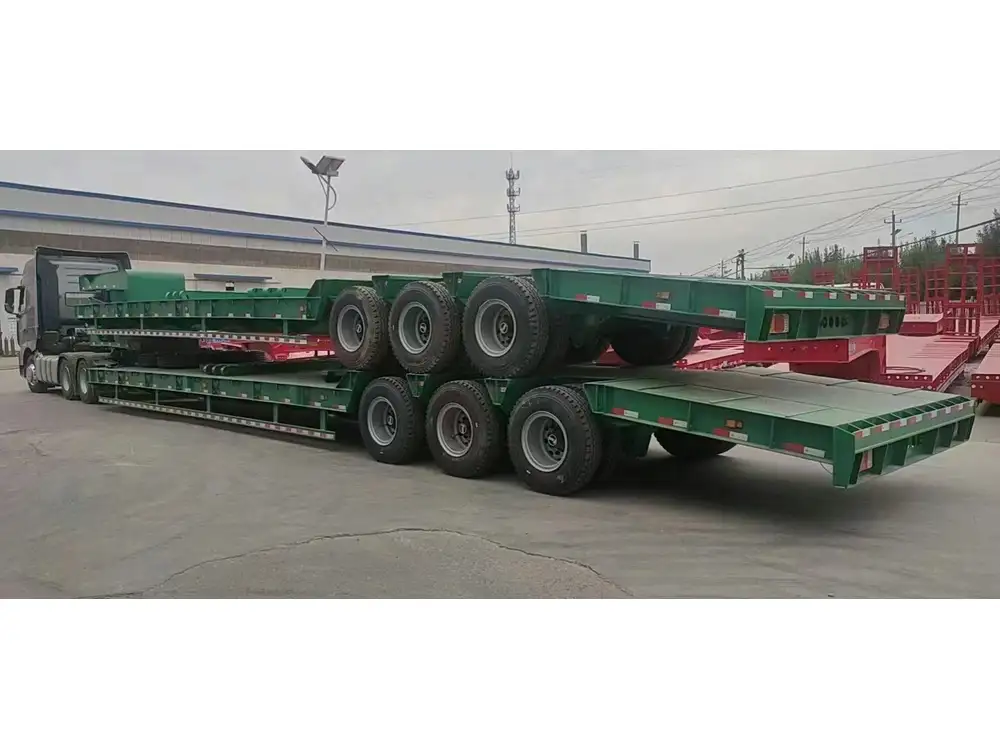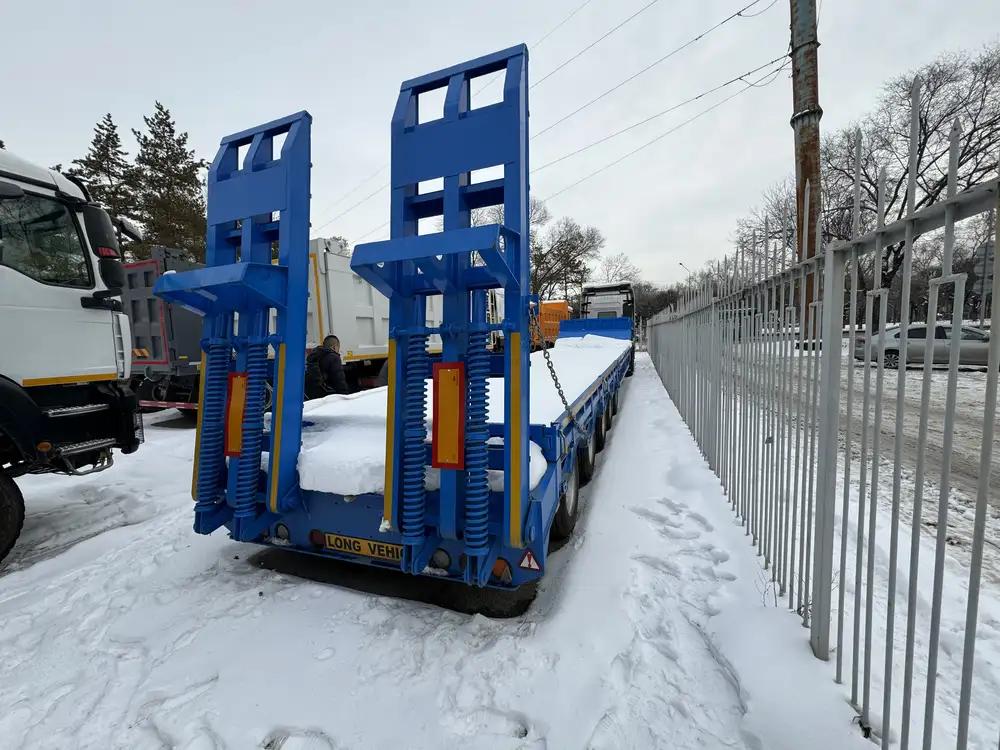In today’s automotive landscape, safety features are paramount, and among them, the Anti-lock Braking System (ABS) stands out as a critical component ensuring vehicle stability and control. At CarMax Vehicle, we understand the importance of such systems, not only in passenger vehicles but also in the heavy-duty semitrailers we manufacture. This guide delves deep into understanding ABS, helping you determine if your vehicle is equipped with this essential technology, and exploring its benefits, functionality, and maintenance.
Understanding ABS: The Cornerstone of Vehicle Safety
The Anti-lock Braking System, commonly referred to as ABS, is a safety mechanism designed to prevent the wheels from locking up during intense braking scenarios. By maintaining optimal tire traction with the road surface, ABS facilitates better steering control, reducing the risk of skidding and enhancing overall vehicle stability.
Key Components of ABS
- Wheel Speed Sensors: Monitor the rotational speed of each wheel.
- Electronic Control Unit (ECU): Processes data from sensors to regulate braking pressure.
- Hydraulic Valves: Adjust brake fluid pressure to prevent wheel lock-up.
- ABS Pump: Restores hydraulic pressure after a braking event.

The Importance of ABS in Modern Vehicles
ABS isn’t merely a luxury feature; it’s a critical safety element that significantly enhances driving safety under various conditions. Here’s why ABS is indispensable:
- Enhanced Control: Prevents wheels from locking, allowing drivers to maintain steering control during emergencies.
- Reduced Stopping Distances: Particularly on slippery surfaces, ABS can decrease the distance required to come to a complete stop.
- Improved Stability: Minimizes skidding and loss of vehicle control, especially during abrupt braking.
- Adaptability: Functions effectively in diverse driving conditions, including rain, snow, and uneven terrains.
Determining if Your Vehicle is Equipped with ABS
For vehicle owners keen on ensuring their vehicle’s safety features, identifying the presence of ABS is straightforward. Here are several methods to confirm whether your vehicle has ABS:
1. Dashboard Indicators
Most vehicles with ABS are equipped with a warning light that illuminates during startup. This light typically resembles a circle with “ABS” inscribed within it.
- Normal Operation: The ABS light flashes briefly during ignition and then turns off once the system is active.
- Potential Issues: If the ABS light remains illuminated, it indicates a malfunction that requires professional attention.

2. Vehicle Specifications
Consulting your vehicle’s manual or manufacturer specifications can provide definitive information about the presence of ABS.
- Owner’s Manual: Detailed sections usually outline all safety features.
- Manufacturer’s Website: Online resources often list standard and optional features for each vehicle model.
3. Physical Inspection
A hands-on approach involves inspecting the braking system components.
- Brake Lines: Look for additional lines or components that indicate the presence of ABS.
- ABS Module Location: Typically found near the brake master cylinder or mounted on the vehicle’s frame.
4. Onboard Diagnostics (OBD-II) Scanner
Utilizing an OBD-II scanner can reveal ABS-related codes and confirm the system’s presence and functionality.

The Mechanics Behind ABS: How It Works
Understanding the operational intricacies of ABS can demystify its role in vehicle safety.
The ABS Workflow
- Detection: Wheel speed sensors continuously monitor each wheel’s rotation.
- Data Transmission: Sensors relay data to the ECU.
- Analysis: The ECU assesses wheel speed variations to detect potential lock-up scenarios.
- Activation: Upon detecting imminent wheel lock-up, the ECU signals the hydraulic valves to modulate brake pressure.
- Regulation: The ABS pump restores pressure, ensuring the brakes function optimally without locking the wheels.
Visual Representation
| Component | Function |
|---|---|
| Wheel Speed Sensors | Monitor rotational speed of each wheel |
| Electronic Control Unit (ECU) | Processes sensor data to manage brake pressure |
| Hydraulic Valves | Adjust brake fluid pressure to prevent wheel lock-up |
| ABS Pump | Restores hydraulic pressure after a braking event |

Benefits of ABS: Beyond Basic Braking
The advantages of incorporating ABS into vehicles extend beyond mere braking efficiency.
Enhanced Safety
ABS significantly reduces the risk of skidding and loss of control, particularly in emergency braking situations. By preventing wheel lock-up, drivers can steer around obstacles while braking, a crucial factor in accident prevention.
Improved Maneuverability
With ABS, vehicles maintain better traction with the road surface, allowing for smoother and more controlled maneuvers, especially on slippery or uneven terrains.

Reduced Brake Wear
By modulating brake pressure, ABS minimizes abrupt braking, leading to less wear and tear on brake components, thereby extending their lifespan.
Compatibility with Advanced Driver-Assistance Systems (ADAS)
Modern vehicles often integrate ABS with other safety technologies like Electronic Stability Control (ESC) and Traction Control Systems (TCS), creating a synergistic effect that further enhances vehicle safety.
Common ABS Issues and Troubleshooting
Despite its reliability, ABS can encounter issues that may compromise its functionality. Recognizing and addressing these problems promptly is essential for maintaining vehicle safety.

ABS Warning Light Indicators
An illuminated ABS warning light signals a malfunction within the system. Potential causes include:
- Faulty Wheel Speed Sensors: Dirt, debris, or damage can impede sensor functionality.
- Damaged ABS Module: Electrical or mechanical failures within the module can disrupt ABS operations.
- Low Brake Fluid Levels: Insufficient brake fluid can affect the hydraulic components of ABS.
Diagnostic Steps
- Check Brake Fluid Levels: Ensure that brake fluid is at the recommended level.
- Inspect Wheel Speed Sensors: Clean or replace sensors if they appear dirty or damaged.
- Scan for Error Codes: Utilize an OBD-II scanner to identify specific ABS-related error codes.
- Consult a Professional: For complex issues, seek assistance from certified automotive technicians.
ABS Not Functioning Properly: Potential Consequences
- Reduced Braking Efficiency: Without ABS, the vehicle is more prone to skidding during hard braking.
- Loss of Steering Control: Wheel lock-up can prevent the driver from steering effectively.
- Increased Accident Risk: Enhanced stopping distances and loss of control heighten the likelihood of collisions.

Maintaining Your ABS: Best Practices
Proper maintenance ensures that the ABS remains functional and reliable, safeguarding your vehicle’s performance and your safety.
Regular Brake System Inspections
Scheduled inspections should include a thorough examination of the brake system components, including ABS-related parts.
Brake Fluid Maintenance
- Regular Checks: Monitor brake fluid levels and quality.
- Scheduled Changes: Replace brake fluid as recommended by the vehicle manufacturer to prevent moisture contamination.

Keep Sensors Clean
Wheel speed sensors are susceptible to dirt and debris. Regular cleaning ensures accurate readings and optimal ABS performance.
Promptly Address Warning Lights
If the ABS warning light illuminates, seek immediate diagnostic and repair services to prevent potential safety hazards.
ABS in Semitrailers: Ensuring Heavy-Duty Safety
While ABS is standard in passenger vehicles, its application in semitrailers is equally critical, especially given the substantial loads these vehicles carry.

The Role of ABS in Semitrailers
- Enhanced Control: Prevents wheel lock-up in trailers, maintaining stability during braking.
- Reduced Skidding Risk: Essential for heavy loads, particularly on slippery or uneven surfaces.
- Improved Braking Efficiency: Ensures that both the tractor and trailer brake systems work in harmony for optimal stopping power.
CarMax Trailer’s ABS-Equipped Semitrailers
At CarMax Vehicle, our semitrailers are designed with integrated ABS systems, ensuring:
- Superior Safety: Our ABS technology enhances the overall safety of your freight operations.
- Reliability: Built to withstand heavy loads and demanding conditions without compromising performance.
- Compliance: Meets or exceeds industry safety standards, providing peace of mind for operators and fleet managers alike.
Comparative Analysis: ABS in Passenger Vehicles vs. Semitrailers
| Feature | Passenger Vehicles | Semitrailers |
|---|---|---|
| Load Capacity | Limited to passenger vehicle specifications | Designed for heavy and variable loads |
| Brake System Complexity | Simplified ABS integration | Advanced ABS systems tailored for heavy-duty usage |
| Maintenance Requirements | Standard vehicle brake maintenance | Specialized maintenance for trailer brake systems |
| Safety Standards | Varying by passenger vehicle regulations | Stringent industry-specific safety standards |

Enhancing Safety with CarMax Vehicle
At CarMax Vehicle, safety is at the forefront of our design and manufacturing processes. Our ABS-equipped semitrailers are a testament to our commitment to delivering reliable and secure transportation solutions. By integrating cutting-edge ABS technology, we ensure that your heavy-duty operations benefit from enhanced braking performance, reduced accident risks, and improved overall vehicle handling.
Conclusion
The presence of ABS in your vehicle is a significant safety advantage, offering enhanced control, reduced stopping distances, and improved overall vehicle stability. Whether you’re operating a passenger vehicle or a heavy-duty semitrailer from CarMax Vehicle, understanding and maintaining your ABS system is crucial for ensuring optimal performance and safety on the road. By following the guidelines outlined in this comprehensive guide, you can confidently determine the presence of ABS in your vehicle, appreciate its benefits, and take proactive steps to maintain its functionality.
Frequently Asked Questions (FAQs)

1. How can I reset the ABS warning light on my dashboard?
Resetting the ABS warning light typically involves diagnosing and addressing the underlying issue causing the light to illuminate. Common steps include checking brake fluid levels, inspecting wheel speed sensors, and clearing error codes using an OBD-II scanner. If the light persists, it’s advisable to consult a professional mechanic to ensure the ABS system functions correctly.
2. Is ABS necessary for trailers, or can they operate safely without it?
While trailers can technically operate without ABS, incorporating ABS significantly enhances safety by preventing wheel lock-up and maintaining stability during braking. For heavy loads and long-distance hauling, ABS-equipped trailers, like those manufactured by CarMax Trailer, offer superior control and reduce the risk of accidents.
3. Does ABS improve fuel efficiency?
ABS primarily enhances braking performance and vehicle safety. While it doesn’t directly improve fuel efficiency, the system can contribute to smoother braking and reduced wear on brake components, potentially leading to indirect fuel savings over time.

4. Can I drive safely without ABS?
Vehicles without ABS can still be driven safely; however, ABS provides added control during emergency braking and on slippery surfaces. Drivers of non-ABS vehicles must exercise greater caution, especially in adverse weather conditions, to mitigate the risk of skidding and loss of control.
5. How long does an ABS system typically last?
An ABS system is designed to last the lifetime of the vehicle with proper maintenance. Regular inspections, timely brake fluid changes, and addressing any warning signs promptly can ensure the ABS functions reliably for many years.



